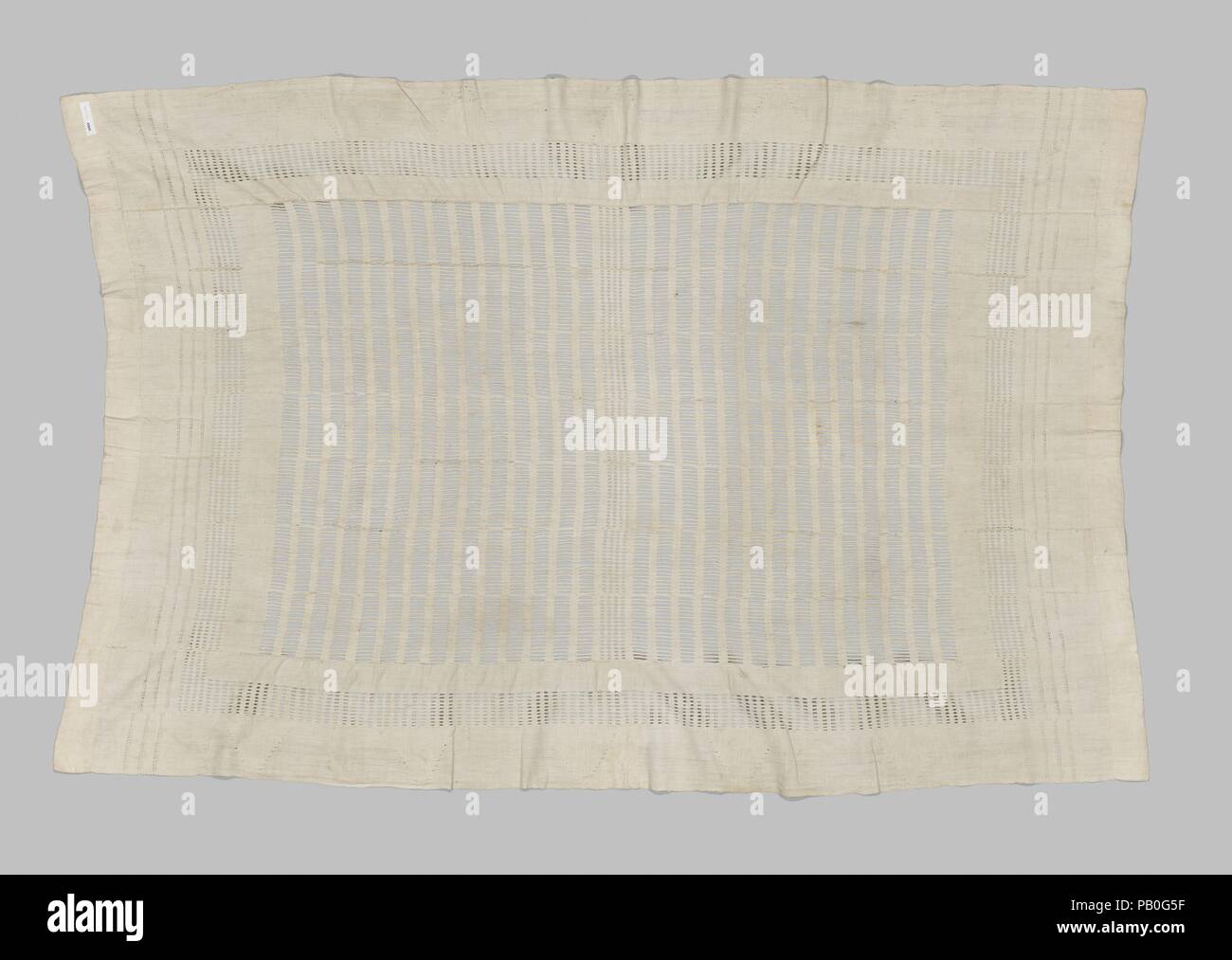Woman's Shawl (Aso Oke). Culture: Yoruba peoples. Dimensions: W. 42 × L. 68 in. (106.68 × 172.72 cm). Date: 19th century. Yoruba shawls such as this example are known as Aso Oke. This shawl is delicate and subtle while simultaneously presenting impressive craftsmanship and intricate composition. It presents a complex composition with four different forms of openwork arranged in separate fields. Woven by men, such shawls, dating back to the late 19th or early 20th century, were traditionnaly worn by women. On some occasions, Aso Oke were worn as head coverings in masquerades, and would then b

Image details
Contributor:
Album / Alamy Stock PhotoImage ID:
PB0G5FFile size:
39.3 MB (1.3 MB Compressed download)Releases:
Model - no | Property - noDo I need a release?Dimensions:
4400 x 3124 px | 37.3 x 26.4 cm | 14.7 x 10.4 inches | 300dpiPhotographer:
AlbumMore information:
This image could have imperfections as it’s either historical or reportage.
Woman's Shawl (Aso Oke). Culture: Yoruba peoples. Dimensions: W. 42 × L. 68 in. (106.68 × 172.72 cm). Date: 19th century. Yoruba shawls such as this example are known as Aso Oke. This shawl is delicate and subtle while simultaneously presenting impressive craftsmanship and intricate composition. It presents a complex composition with four different forms of openwork arranged in separate fields. Woven by men, such shawls, dating back to the late 19th or early 20th century, were traditionnaly worn by women. On some occasions, Aso Oke were worn as head coverings in masquerades, and would then be worn by men. Placed over the head and held in place by a hat, the dancer was able to see through the openwork at front. Several early colonial photographs document this usage. Museum: Metropolitan Museum of Art, New York, USA.